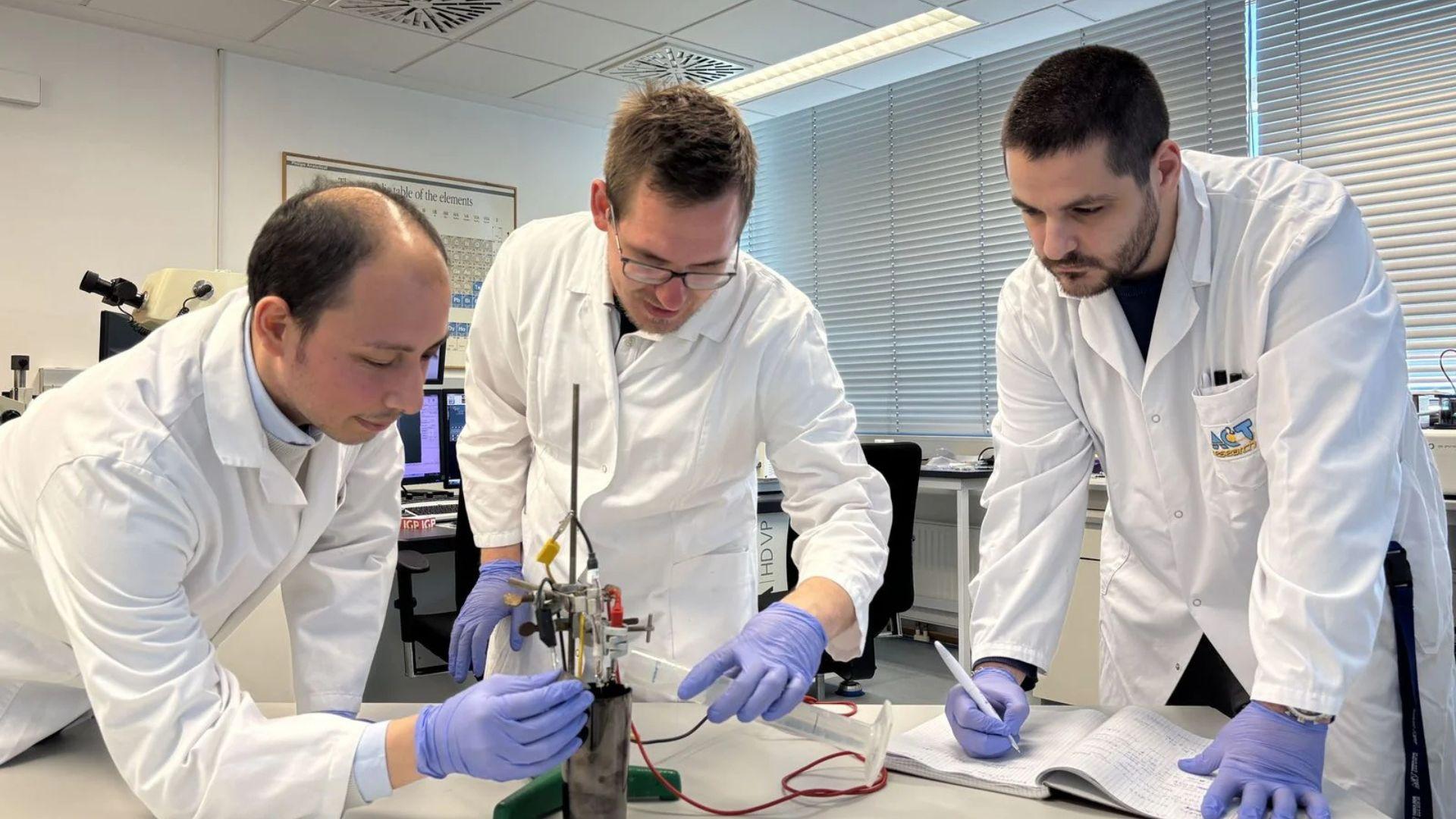| IN A NUTSHELL |
|
The world of materials science is witnessing a groundbreaking advancement with the development of a novel, non-toxic method for producing MXene, a nanomaterial celebrated for its impressive properties and diverse applications. Traditionally, the synthesis of MXene involved the use of hazardous chemicals, limiting its potential for broader industrial implementation. However, researchers at TU Wien have introduced an innovative technique that promises to revolutionize MXene production by utilizing safe chemicals and electric pulses, achieving remarkable yields without harmful byproducts. This breakthrough paves the way for safer, more efficient production methods, unleashing the full potential of MXene in various industries.
Unveiling the Safe Etching Innovation
Since the discovery of graphene, scientists have been on a quest to explore other two-dimensional materials like MXenes, first identified in 2011. MXenes consist of ultra-thin layers of metal carbides or nitrides, boasting exceptional electrical, mechanical, and optical properties. The most studied MXene is titanium carbide, typically synthesized by etching away layers from a precursor known as a MAX phase. Traditionally, this process involved the use of hydrofluoric acid (HF), a highly toxic substance hazardous to both humans and the environment.
Alternative methods, such as the MILD method or molten salt synthesis, have been explored, but they also come with drawbacks, including the use of toxic chemicals or the requirement of high temperatures. In response to these challenges, researchers have been seeking safer, greener options for MXene production.
Electrochemical etching has emerged as a promising approach, using voltage to remove unwanted layers. However, previous methods often involved toxic additives or long processing times, limiting their scalability. The latest advancements in electrochemical techniques are now offering hope for safer and scalable MXene production, achieving high quality without compromising safety.
Introducing the Sustainable MXene Method
The research team at TU Wien has pioneered a new approach in MXene synthesis through the innovative use of reverse pulse voltammetry. This technique applies meticulously controlled pulses of electrical current to selectively break aluminum bonds in the MAX phase without damaging the rest of the structure. Unlike conventional methods, where surface activity rapidly declines, the pulse approach generates tiny hydrogen bubbles that clean and reactivate the surface, significantly improving yield and maintaining the quality of the resulting electrochemical MXenes (EC-MXenes).

This method stands out by avoiding harmful chemicals altogether, achieving up to 60 percent yield of EC-MXenes in a single etching step with no byproducts. Remarkably, it proves effective regardless of whether a green intercalant like DMSO or a more toxic one like TMAOH is employed. The process involves the formation of hydrogen bubbles through reverse cathodic pulses, helping to remove stuck MXene flakes and unwanted residues, ultimately boosting efficiency and purity.
The resulting EC-MXenes exhibit low fluoride content, specific surface features, and impressive stability. Consistent measurements from various advanced techniques, including Atomic Force Microscopy, Scanning and Transmission Electron Microscopy, Raman and X-ray Photoelectron Spectroscopy, and Low Energy Ion Scattering, confirm the quality of the final product.
Table: Key Features of the New MXene Production Method
| Feature | Details |
|---|---|
| Technique | Reverse Pulse Voltammetry |
| Yield | Up to 60% in a single step |
| Chemicals Used | Non-toxic alternatives |
| Byproducts | None |
| Surface Reactivation | Hydrogen bubble formation |
The Future of MXene: Scaling Up and Industrialization
With the advent of this new pulsed electrochemical synthesis technique, the future of MXene production looks promising. The process not only ensures high-quality exfoliation and surface reactivation but also facilitates the scaling up of MXene production for industrial applications. This method aligns with the growing demand for green industrialization, providing a path towards environmentally friendly manufacturing processes.
As industries increasingly seek sustainable alternatives, the scalable and green production of MXenes could open new avenues in various fields, including advanced battery technologies and high-performance lubricants. The research conducted by the TU Wien team underscores the significance of this innovative technique in paving the way for a new era in materials science.
As we continue to explore the possibilities of MXene and its applications, how will this transformative technology shape the future of industries and contribute to a more sustainable world?
Did you like it? 4.3/5 (29)






This is amazing! Finally, a safer way to produce MXene. Kudos to the research team! 🙌
How does reverse pulse voltammetry actually work? I’m curious about the technical details.